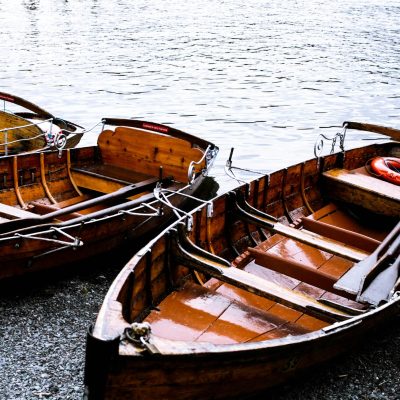History of the Lake District
Backpack & Track
From prehistoric times to the modern day

The Lake District, a region of outstanding natural beauty in northwest England, has a rich and captivating history that stretches back thousands of years. From prehistoric times to the present day, the area has witnessed significant events and developments that have shaped its landscape, culture, and identity.
Prehistoric Times
The earliest evidence of human activity in the Lake District dates back to the Mesolithic period, around 10,000 years ago. During this time, hunter-gatherers would have inhabited the area, exploiting its natural resources for survival. Later, in the Neolithic period, the first farmers arrived, clearing forests and establishing settlements.
Roman Occupation
The Romans invaded Britain in 43 AD and eventually extended their influence into the Lake District. They built roads, forts, and settlements, and their presence had a lasting impact on the region’s landscape and culture. The Roman fort at Ambleside, for example, was an important military outpost and a center of trade and administration.
Post-Roman Period and the Anglo-Saxons
After the Romans withdrew from Britain in the 5th century, the Lake District was settled by Anglo-Saxon tribes. During this period, the area was known as Cumbria, which means “land by the sea.” The Anglo-Saxons established farms, villages, and monasteries, and their influence can still be seen in the names of many places in the region.
The Vikings
In the 9th century, the Vikings launched raids on the coast of Britain, including Cumbria. They established settlements and trading posts, and their presence had a significant impact on the region’s culture and language. The Norse influence can be seen in the names of many places in the Lake District, such as Windermere and Ullswater.
The Middle Ages
During the Middle Ages, the Lake District was ruled by a series of powerful families, including the Norman Barons and the Lancaster Dukes. The area was also home to several monasteries, including Furness Abbey and Cartmel Priory, which played an important role in the region’s economic and cultural life.
The 14th century was a time of great hardship for the Lake District, as the region was affected by famine, plague, and warfare. The Black Death, a devastating pandemic that swept through Europe in the mid-14th century, is believed to have killed a large proportion of the population.
The Tudor Period
The Tudor period (1485-1603) was a time of significant change and development in the Lake District. Henry VIII dissolved the monasteries, which led to the confiscation of their lands and wealth. Many of these lands were then granted to wealthy families, who used them to create large estates and country houses.
The Tudor period also saw the growth of the wool industry in the Lake District, which provided a source of income for many families. The region’s sheep were renowned for the quality of their wool, which was exported to other parts of Europe.
The Stuart Period
During the Stuart period (1603-1714), the Lake District was a popular destination for wealthy landowners and aristocrats, who built grand country houses and landscaped gardens. The most famous of these houses is Keswick Hall, which was built in the 17th century by the Cumberland family.
The Stuart period also saw the development of tourism in the Lake District. Visitors came to the region to enjoy its beautiful scenery, fresh air, and mineral waters. The first guidebook to the Lake District was published in 1718, and by the end of the century, the region was a popular destination for tourists from all over Britain.
The 18th and 19th Centuries
The 18th and 19th centuries were a time of significant economic and social change in the Lake District. The Industrial Revolution led to the development of new industries, such as slate quarrying and copper mining. These industries provided employment for many people, but they also had a negative impact on the environment.
The Romantic movement, which swept through Britain in the late 18th and early 19th centuries, had a profound influence on the Lake District. Poets such as William Wordsworth and Samuel Taylor Coleridge celebrated the region’s natural beauty and its spiritual qualities. Their writings helped to establish the Lake District as a national symbol of romanticism and wilderness.
The 20th and 21st Centuries
The 20th century was a time of great change for the Lake District. The region was affected by two world wars, which led to the closure of many businesses and the displacement of people. In the post-war period, however, the Lake District experienced a revival, as tourism began to grow once again.
The 21st century has seen the Lake District become an increasingly popular destination for visitors from all over the world. The region’s natural beauty, cultural heritage, and recreational opportunities continue to attract people of all ages and backgrounds. However, the Lake District also faces challenges, such as the impact of tourism on the environment and the need to protect its fragile ecosystems.
The history of the Lake District is a long and complex story that reflects the region’s unique character and identity. From its prehistoric beginnings to the present day, the Lake District has witnessed significant events and developments that have shaped its landscape, culture, and identity. The region’s rich history continues to inspire and fascinate people from all over the world.
Learn more on a full day excursion which includes:
- Chance to explore the stunning Lake District National Park
- Hill Top, the former country home of Beatrix Potter
- Scenic lake cruise on the beautiful Coniston Water
- Region that provided inspiration for English Romantic poets
- Authentic English cream tea in a country house hotel
“
All the Gear!
See all the latest reviews, best buys and equipment to help make your trip to the Lake District complete
Blog
See the complete list of articles here, whether it is on the best walks or the best cafes, your read, you choose
Walk the Lakes
All the best walks, from mountain summits to easy strolls, circular pub walks or dog friendly romps





